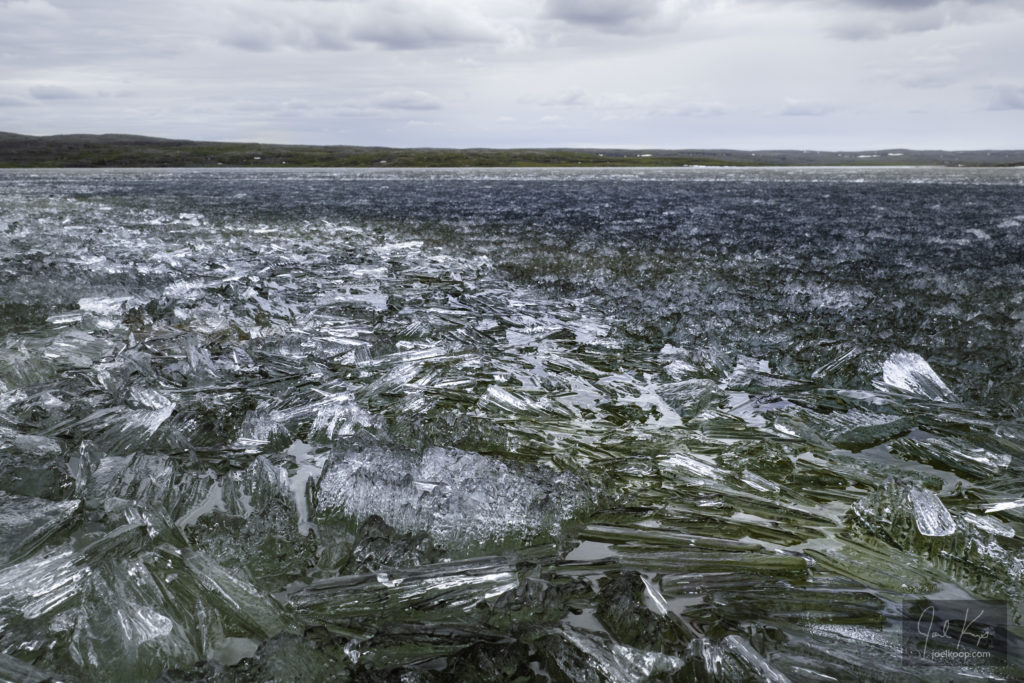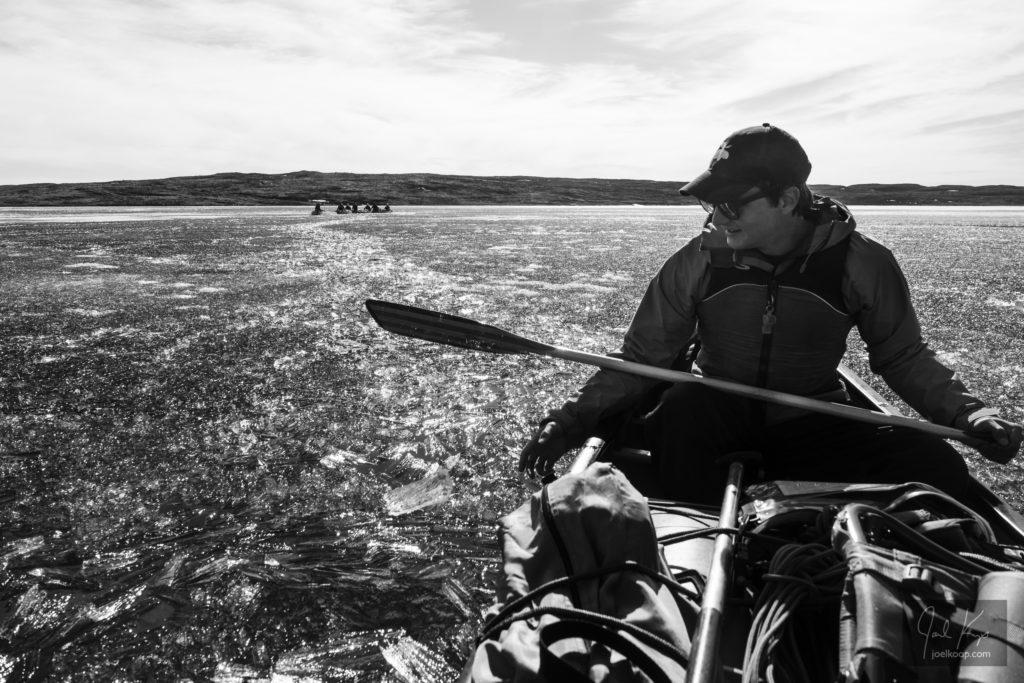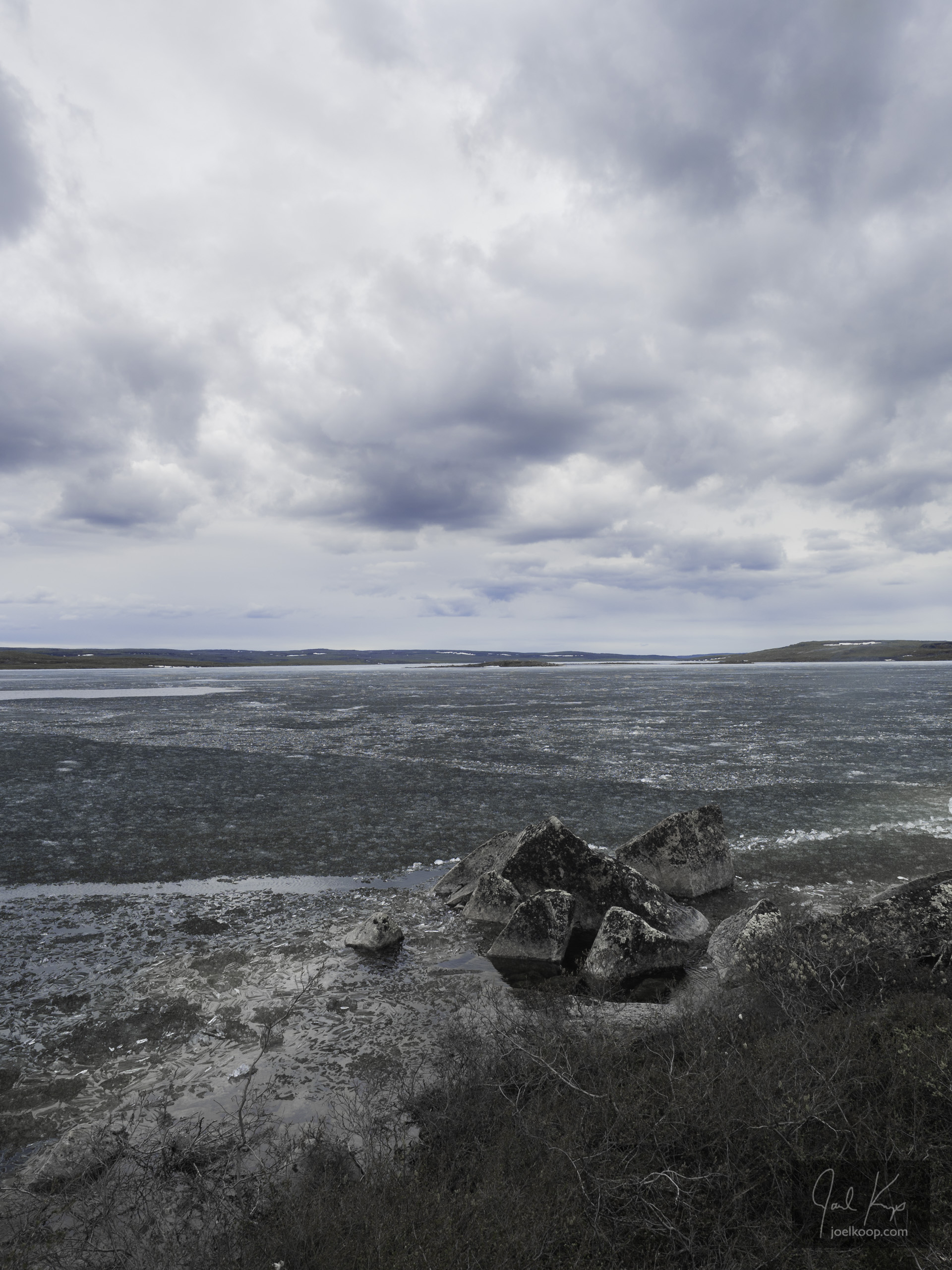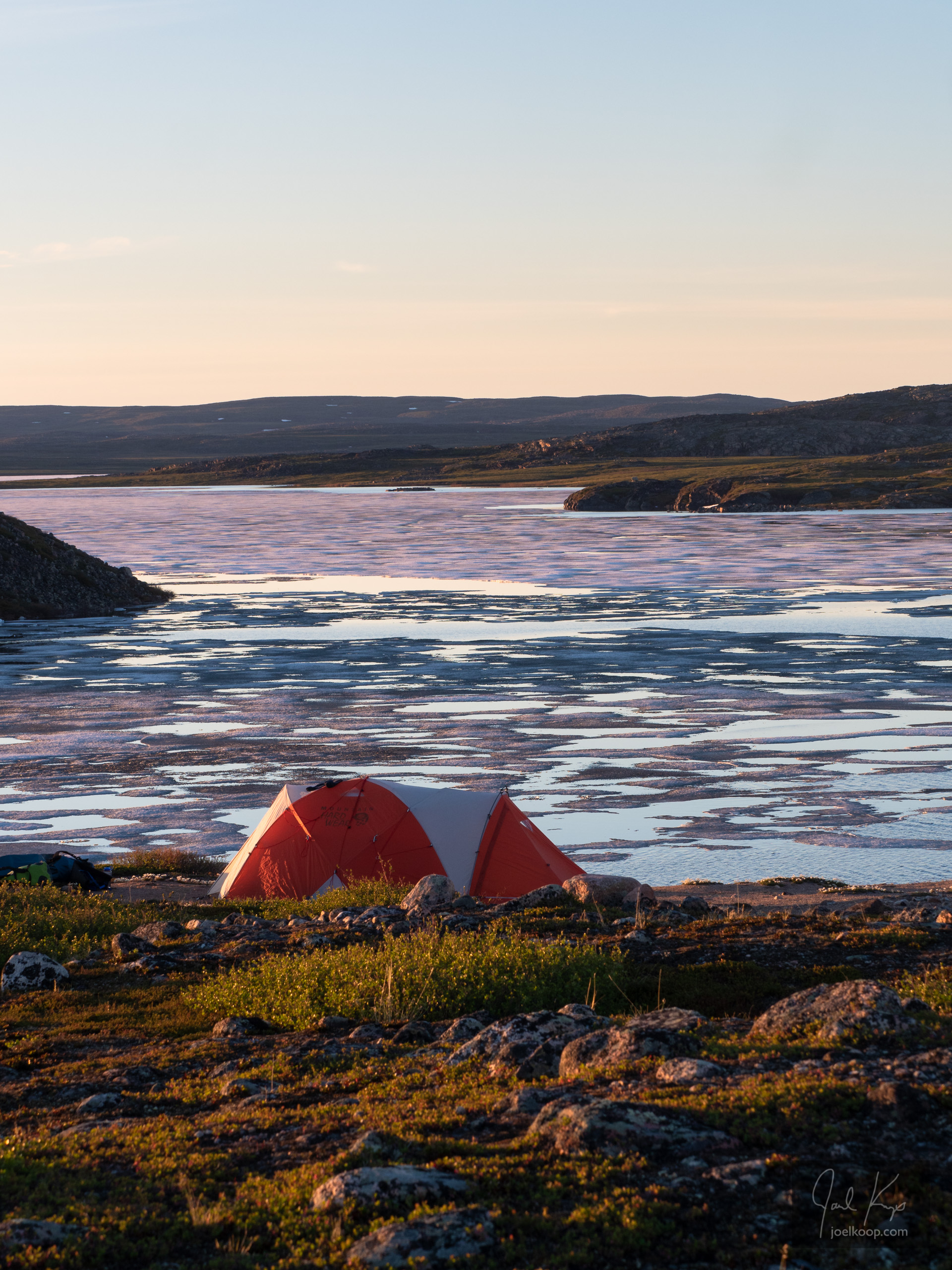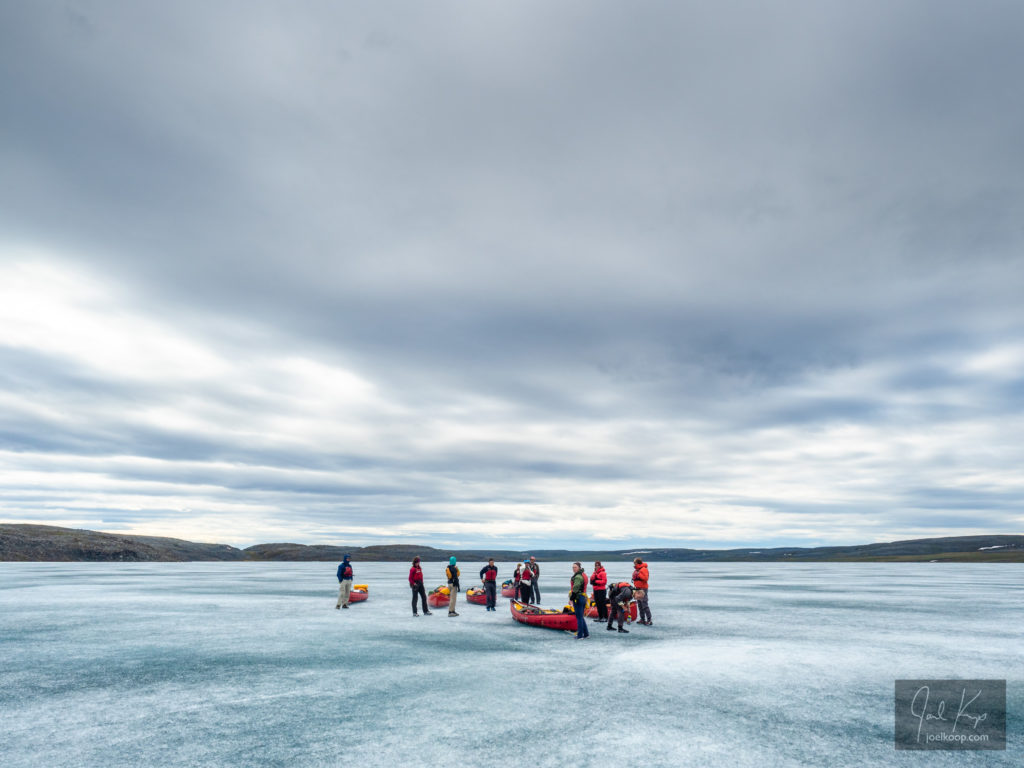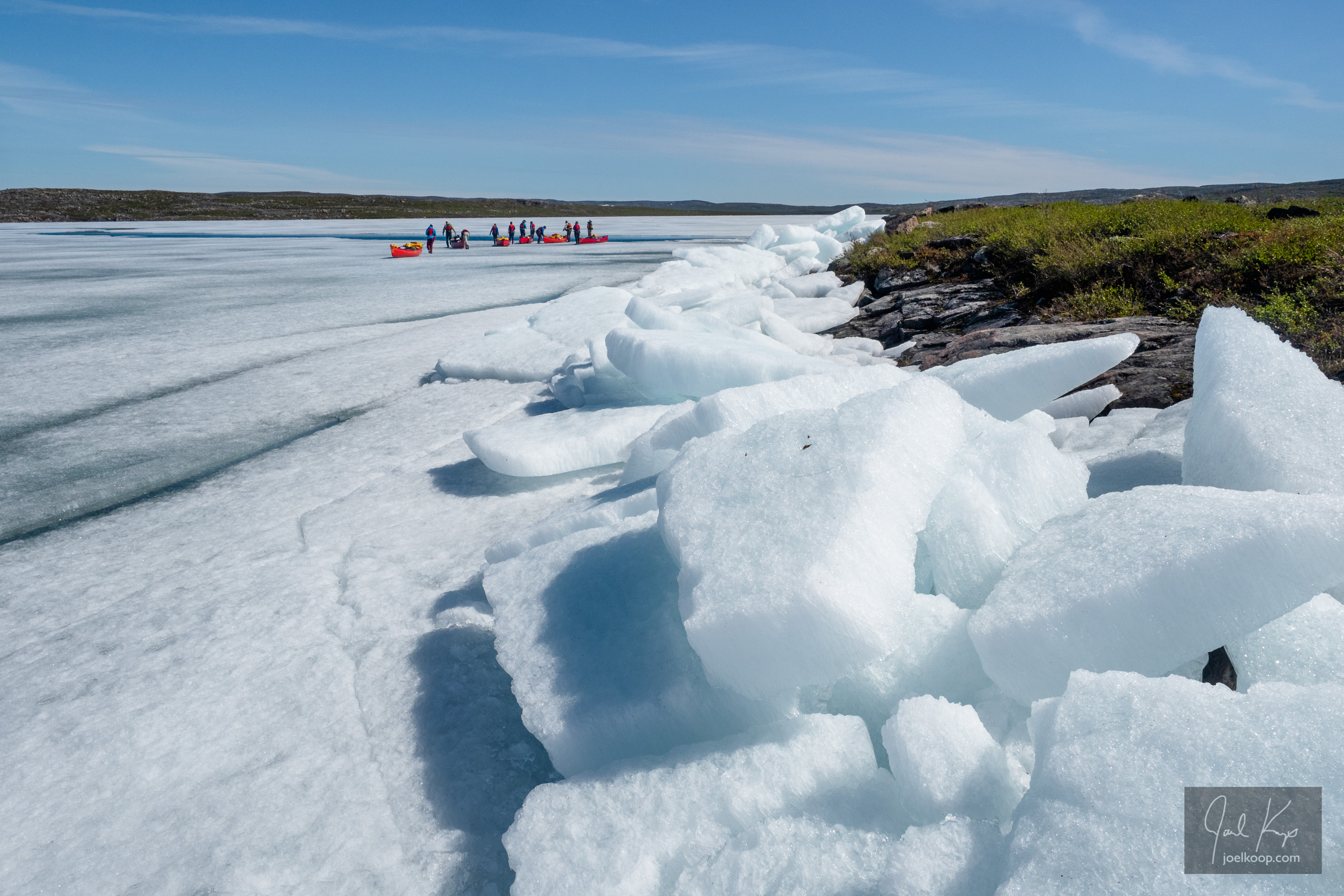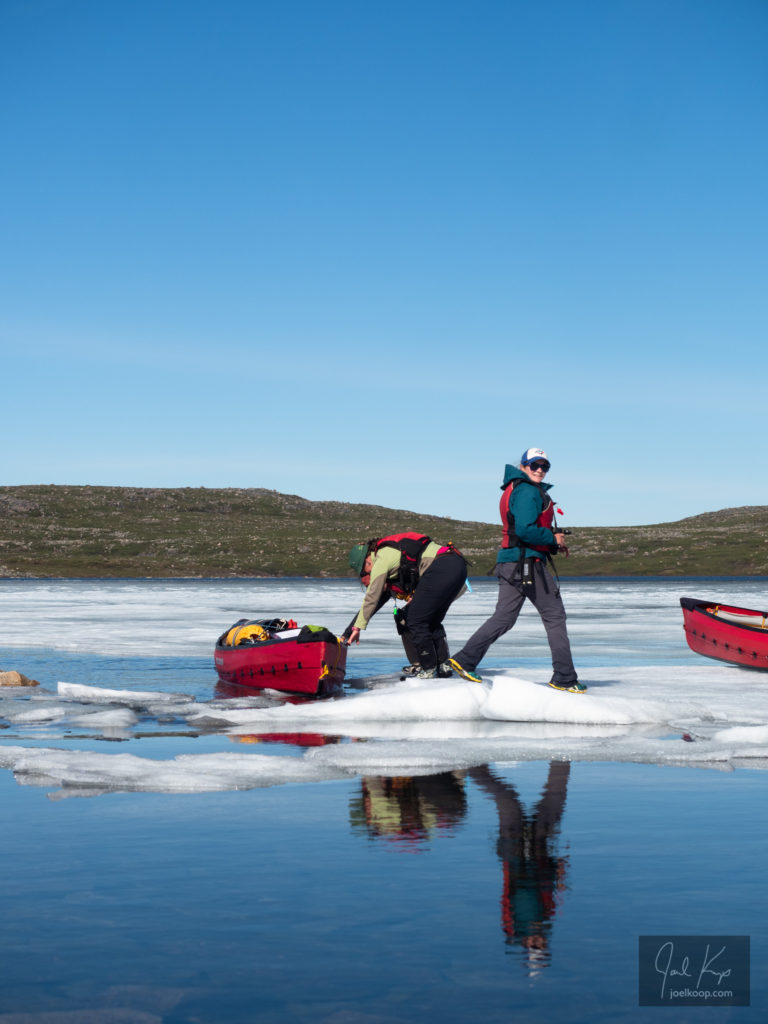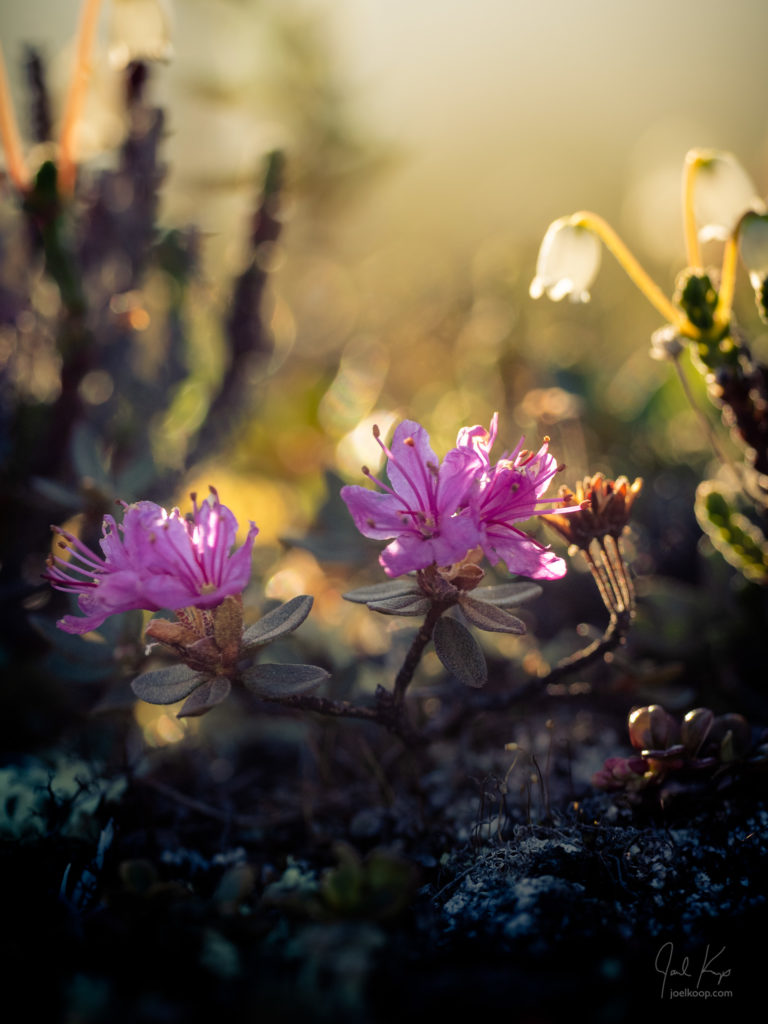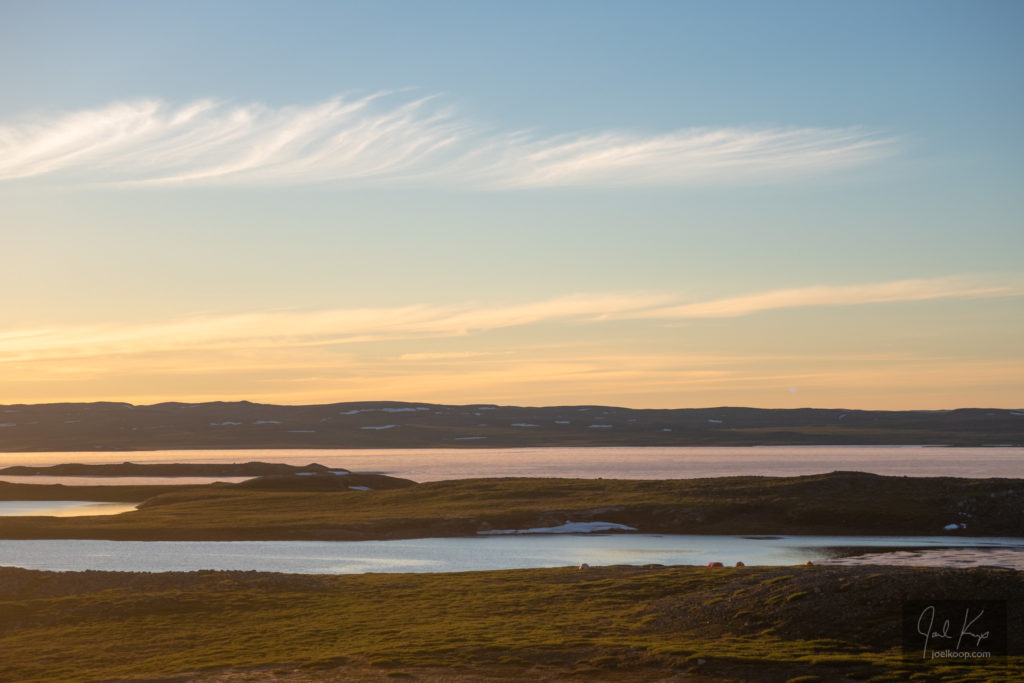Candled ice on the corner of Esker Lake.
Not all the ice on the Hood River was solid. As we got to Esker Lake, the last major lake on the river, we started getting a lot of candled ice. Candled ice is an experience. As the ice melts, it forms long vertical splinters (often 8-25cm long and less than an a few cm thick) that eventually break apart. When you are sitting still, it sounds like the most beautiful windchimes you can imagine spread out over the surface of a lake. There is a delicate glasslike tinkling like a million tiny toasts to you being there. But when you try to canoe through it, it creates a harsh racket and tries to block everything you do. Much of the time we had to chop it up with our paddles so our canoes could actually move. Normal canoes (we had two royalex prospectors and a canyon) slide through with a bit of effort, but pakboats stick to every little piece. We eventually learned to paddle in pairs of boats with a hard-sided canoe breaking the trail and a pakboat following right behind through the broken ice before it could close back in. Even so it is much slower than walking and you’re fighting for every paddle stroke. Luckily we only had a few hours of paddling through candled ice on this trip.
Taking a break after some hard paddling.
Surveying the expanse of candled ice we have to paddle through.
From the shore of Esker Lake.
